MONDAY, SEPTEMBER 21, 2020. BY STAN GRANT, VITICULTURIST.
Sauvignon blanc has a long and noble history in regions of France where the Cabernet family of varieties predominate, most notably in Bordeaux and the Loire Valley. Actually, Sauvignon blanc is one of the parents of Cabernet Sauvignon. The origins of Sauvignon blanc are unknown, although France is likely its native land.
In California, Sauvignon blanc has been a fixture of the wine industry since the 1880’s. Today, it is present to some extent in virtually all winegrape regions of the state. While representing only a small part of the total statewide winegrape crush (≈3% in 2019), Sauvignon blanc acreage has been stable and is likely to remain so for some time.
Typical Sauvignon blanc wines have distinctive herbaceous (e.g. grassy, leafy) aromas and flavors. These can vary in intensity according to grape growing and winemaking conditions, sometimes overpowering many of the other sensory characteristics of Sauvignon blanc. For this reason and for others covered in the next section of this article, it is among the most challenging varieties for winegrape growers. Successful management of Sauvignon blanc involves the combination of thoughtful vineyard design and once established, careful application of resources.
The Nature of Sauvignon blanc
Perhaps foremost among Sauvignon blanc challenges is its tremendous capacity for producing leaves and stems (vegetative growth), oftentimes at the expense of fruit (reproductive growth). Actually, the name Sauvignon is fitting. It derives from Sauvage, a French word meaning wild.
Under favorable growing conditions, rootstocks have little or no influence on the growth capacity of Sauvignon blanc. This includes rootstocks reputed to have devigorating influences on grapevine growth, like 420A and Schwarzmann. Most Sauvignon blanc clones also differ little in vegetative growth capacity.
Oftentimes, when Sauvignon blanc vineyards are developed using conventional designs involving bilateral cordons and spur pruning in a single canopy configuration, its tremendous growth capacity becomes apparent as very rapid (vigorous) shoot elongation and excessively long shoots (Figure 1). Such surplus canopy development results in under cropping and fruit zone shading, with attendant negative effects on grape quality, fungal disease, and return yield. Importantly, excessive canopy growth and shading are associated with intensified herbaceous aromas and flavors in the berries.
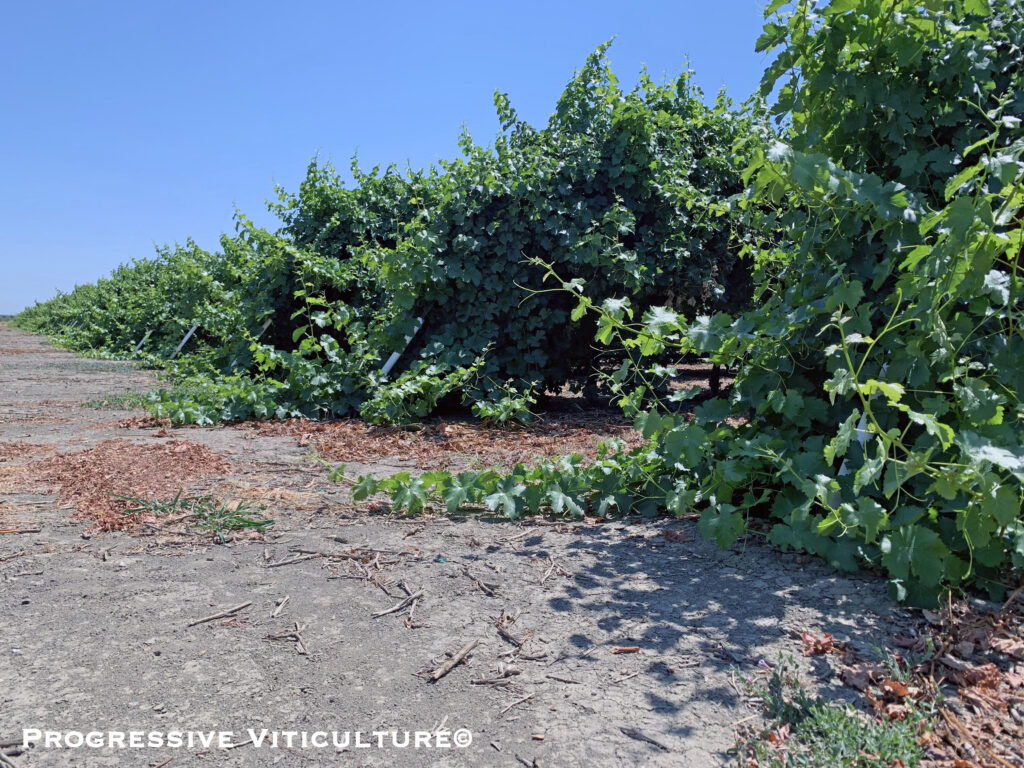
Figure 1. Excessively long, vigorously growing Sauvignon blanc shoots are evident on the headlands of this vineyard. (Progressive Viticulture©)
Uncommonly short internodes, another inherent Sauvignon blanc trait, can intensify fruit zone shading and exacerbate the negative effects listed above. Correspondingly, complete Sauvignon blanc canopies, with 14 to 20 nodes per shoot, appear compact compared to complete canopies of other commonly grown winegrape varieties. Further, unlike most other varieties, Sauvignon blanc shoots are stiff and tend to grow upright. Due to this combination of traits, positioning of Sauvignon blanc shoots within foliage wires frequently intensifies fruit zone shading (Figure 2). Therefore, the use of foliage support wires is limited in California Sauvignon blanc vineyards, being utilized mainly in areas subject to winds or where cool climates inhibit growth and ripening.
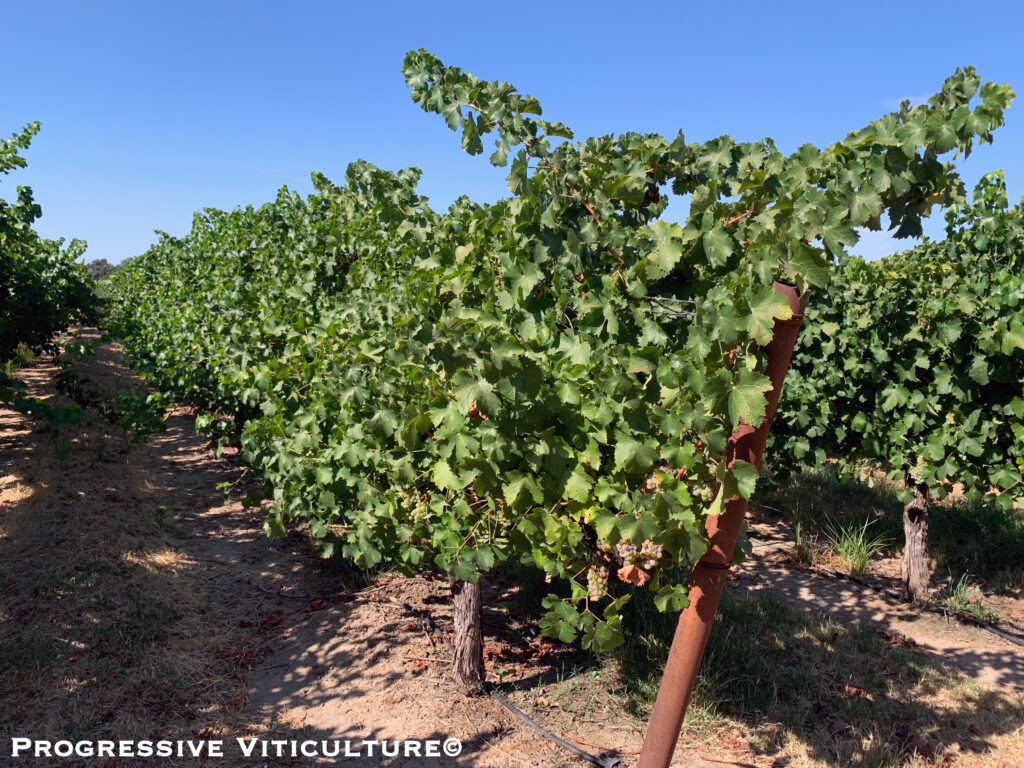
Figure 2. In many locations, Sauvignon blanc shoots, with their stiff stems and short internodes, extend to the sides and well beyond the foliage wires of vertical shoot positioned trellis systems, resulting in shaded fruit zones even after hedging. (Progressive Viticulture©)
Sauvignon blanc fruit is another challenge. Clusters are compact and due to short peduncles, reside close to main stems. At the same time, berries are comparatively thin-skinned and vulnerable to mechanical damage (Figure 3). This combination of factors makes Sauvignon blanc prone to bunch rot. The tendency for shading and restricted air movement in fruit zones increases the likelihood of this disease for Sauvignon blanc. In addition to bunch rot, Sauvignon blanc is highly susceptible to cordon and trunk diseases.
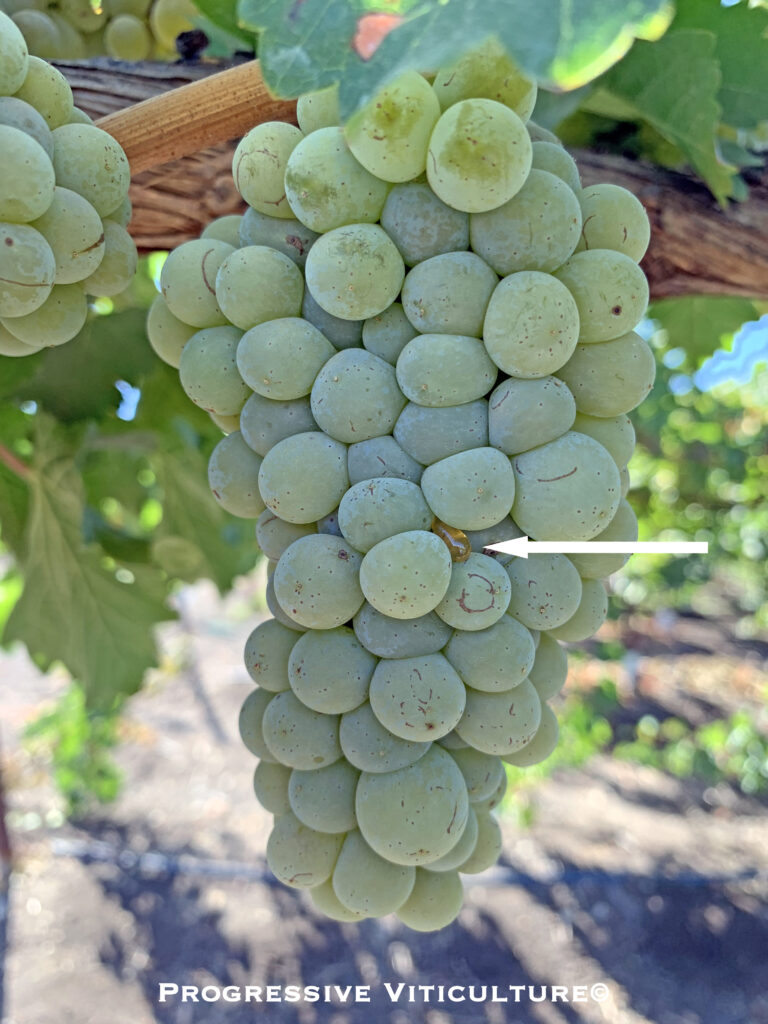
Figure 3. Sauvignon blanc berries leaking juice near the center of this cluster during the ripening period. (Progressive Viticulture©)
Vineyard Designs for Sauvignon blanc
The most easily managed Sauvignon blanc vineyards begin with wide spacing within the vine rows to allow room for large vines. Spur pruned quadrilateral cordons often fill these spaces. Actually, Sauvignon blanc was among the first varieties in California to be trained in this manner on a large scale. Six-foot vine spacing with 12 feet of cordon per vine is typical for horizontally divided Sauvignon blanc vines. This configuration allows for a relatively large number of spurs, buds, and shoots per vine, which effectively dilutes shoot growth vigor and many times constrains their final length within the desirable range of 14 to 20 nodes per shoot (Figure 4). It also makes possible a large number of clusters per vine, which favors a shift in growth balance towards fruit.
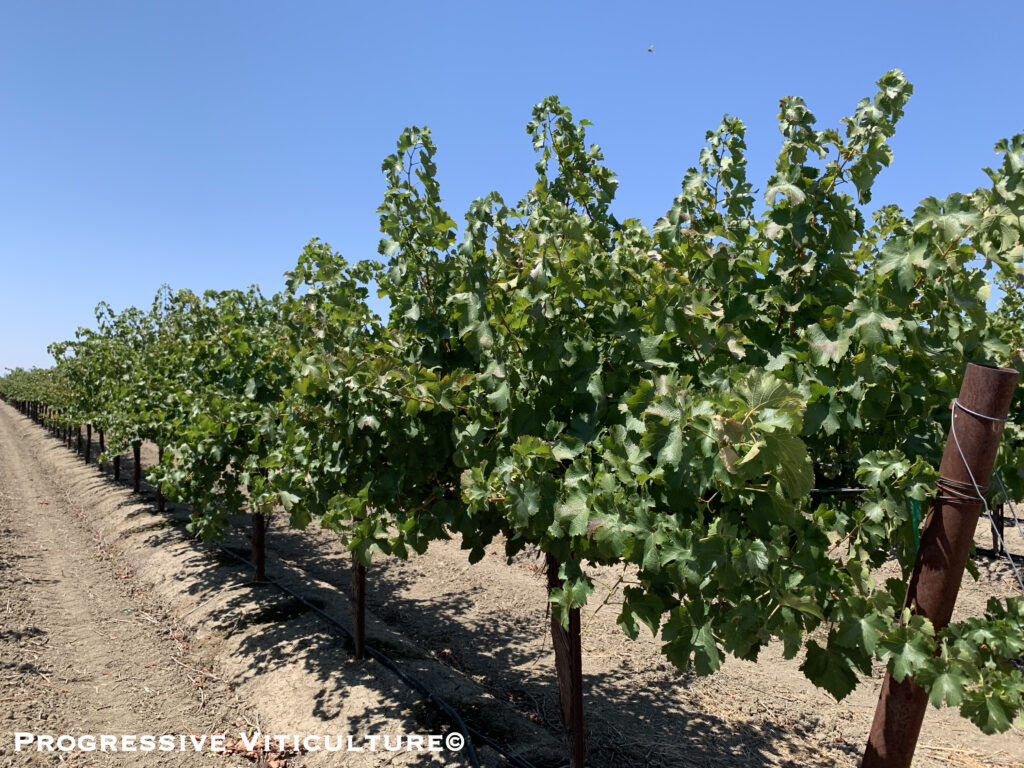
Figure 4. Controlled Sauvignon blanc shoot growth and canopy development with a quadrilateral cordon vineyard design. (Progressive Viticulture©)
Alternatively, the vines may be head-trained and bear four canes on horizontally divided wires. Head training and cane pruning devigorate shoot growth, but the added pruning costs and increased shoot development variability has limited the acreage of cane pruned Sauvignon blanc in California.
Vineyard Management for Sauvignon blanc
Even with an appropriate vineyard design, management of Sauvignon blanc shoot growth, canopy development, and fungal disease can be challenging. For this reason, success also depends on an attentive, systematic management approach.
Prune to 1-bud spurs and about 5 to 6 spurs per foot of cordon. After shoots have emerged and are 8 to 12 inches long, thin to conserve the spacing set at pruning. These two actions set the stage for a favorable fruit zone environment. While shoots are about 4 to 6 inches long and the main stem of clusters are beginning to elongate, apply gibberellin at a low concentration to stretch clusters and decrease their compactness, thereby diminishing the risk of bunch rot.
Carefully regulate Sauvignon blanc vineyard water. Initiate irrigations only after shoot elongation is very slow or is arrested, or after pressure chamber readings are -10 bars or lower. Use regulated deficit irrigation (RDI) schedules to prevent renewed shoot growth, limit fruit zone humidity, and minimize bunch rot.
At the same time, limit Sauvignon blanc access to nitrogen. In some instances, a single post-harvest nitrogen application is sufficient to replenish stored reserves in woody vine tissues and ensure adequate vine nitrogen for the following growing season. Apply fertilizer nitrogen in-season only where shoot growth is uncharacteristically slow, foliage is pale, or when leaf tissue concentrations are low. Healthy pasture grass or cereal grain cover crops deplete both soil water and nitrogen, limiting the supply available to vines and aiding in the control of Sauvignon blanc canopy development.
Sometimes, the preceding practices are insufficient to control Sauvignon blanc shoot growth and canopy size, making remedial canopy management practices necessary. If needed, remove leaves or lateral shoots from fruit zones to expose clusters to dappled sunlight and air movement. In most of California, this practice is best applied shortly after fruit set. To minimize sun damage on exposed berries, retain a thin veneer of a single leaf layer on the afternoon sides of canopies.
Where canopy development is excessive, hedge the apical ends of shoots to restore growth balance. Whenever possible, delay hedging until after moderate water stress has arrested shoot elongation to prevent the growth of lateral shoots, which will increase foliage density and shading within fruit zones (Figure. 5).
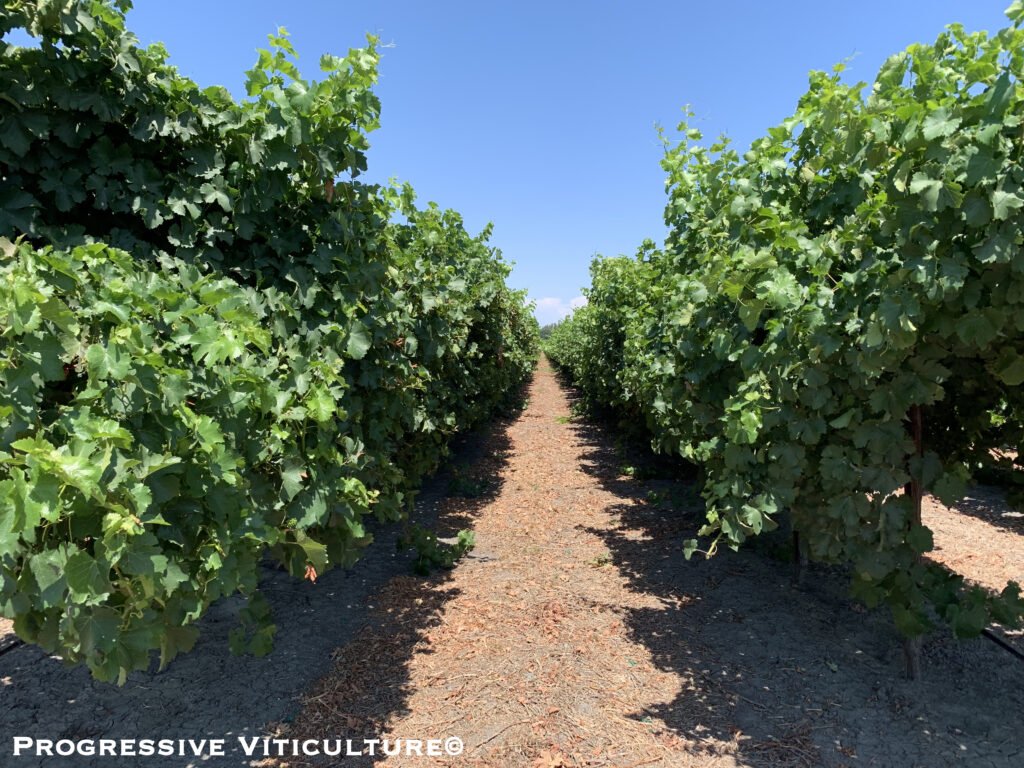
Figure 5. Hedging Sauvignon blanc before shoot growth is controlled induces abundant lateral shoot growth. (Progressive Viticulture©)
Sauvignon blanc Clones
Sauvignon blanc-01, also known as the Wente Clone, is the prominent clone planted in California. Presumably, it is also the foundation of New Zealand Sauvignon blanc production. In a Lake County trial, Sauvignon blanc-01 produced high fruit yields, as did clones 16, 18, 23, and 25. Wines made from these and other clones in the trial had similar sensory characteristics. Unfortunately, as mentioned above, all clones have the viticultural challenges described in this article.
Sauvignon blanc Musque appears somewhat different than other Sauvignon blanc clones, although its DNA seems to be identical. In my experience, Sauvignon blanc Musque canes are more reddish and berries are more bluish-green compared to the brownish stems and yellowish green berries of Sauvignon blanc-01 (Figure 6). The fruit of Sauvignon blanc Musque tends toward fruitier and less herbaceous aromas and flavors than those of clone 01.

Figure 6. Sauvignon blanc Musque berries are slightly blue-green and the stems are slightly reddish. (Progressive Viticulture©)
In Summary
Sauvignon blanc possesses a unique set of characteristics that challenge growers. These include a very large growth capacity, growth partitioning that favors foliage over fruit, a tendency towards fruit zone shading, and fruit prone to vegetative sensory characteristics and bunch rot. Consequently, success with Sauvignon blanc very much depends on an appropriate vineyard design and careful management.
This is a modified version of an article published in the Mid Valley Agricultural Services October 2011 newsletter.
Further Reading
Grant, S. Cluster elongation to control bunch rot in winegrapes. Wines and Vines. pp. 71-74. May 2013.
Grant, S. Vineyard design and management for maximum efficiency. Lodi Winegrape Commission Coffee Shop Blog. lodigrowers.com/vineyard-design-management-for-maximum-efficiency/. February 22, 2018.
Grant, S. Vine growth capacity and horizontally divided vines. Lodi Winegrape Commission Coffee Shop Blog. lodigrowers.com/vine-growth-capacity-and-horizontally-divided-vines/. June 03, 2019.
Grant, S. Integrated cordon, and trunk disease management. Lodi Winegrape Commission Coffee Shop Blog. lodigrowers.com/integrated-cordon-and-trunk-disease-management/. February 10, 2020.
Grant, S. Farming winegrapes for production. Lodi Winegrape Commission Coffee Shop Blog. lodigrowers.com/farming-winegrapes-for-production/. August 31, 2020.
Jackson, DI, and Lombard, PB. Environmental and management practices affecting grape composition and wine quality: A review. American Journal of Enology and Viticulture. 44, 409-430. 1993.
Robinson, J. Vines, grapes and wines: the drinker’s guide to grape varieties. London, Mitchell Beazley. 1986.
Smart, R, and Robinson, M. Sunlight into wine: A Handbook for Winegrape Canopy Management. Winetitles, Adelaide. 1991.
Smith, RJ. Sauvignon blanc In: Wine grape varieties in California. University of California Agriculture and Natural Resources Publication 3419.
Sullivan, CL. A companion to California wine: an encyclopedia of wine and winemaking from the mission period to the present. University of California Press, Berkeley. 1998.
Sweet, N. Sauvignon blanc: past and present. Foundation Plant Services Grape Program Newsletter. October 2010.
Have something interesting to say? Consider writing a guest blog article!
To subscribe to the Coffee Shop Blog, send an email to stephanie@lodiwine.com with the subject “blog subscribe.”
To join the Lodi Growers email list, send an email to stephanie@lodiwine.com with the subject “grower email subscribe.”
To receive Lodi Grower news and event promotions by mail, send your contact information to stephanie@lodiwine.com or call 209.367.4727.
For more information on the wines of Lodi, visit the Lodi Winegrape Commission’s consumer website, lodiwine.com.


